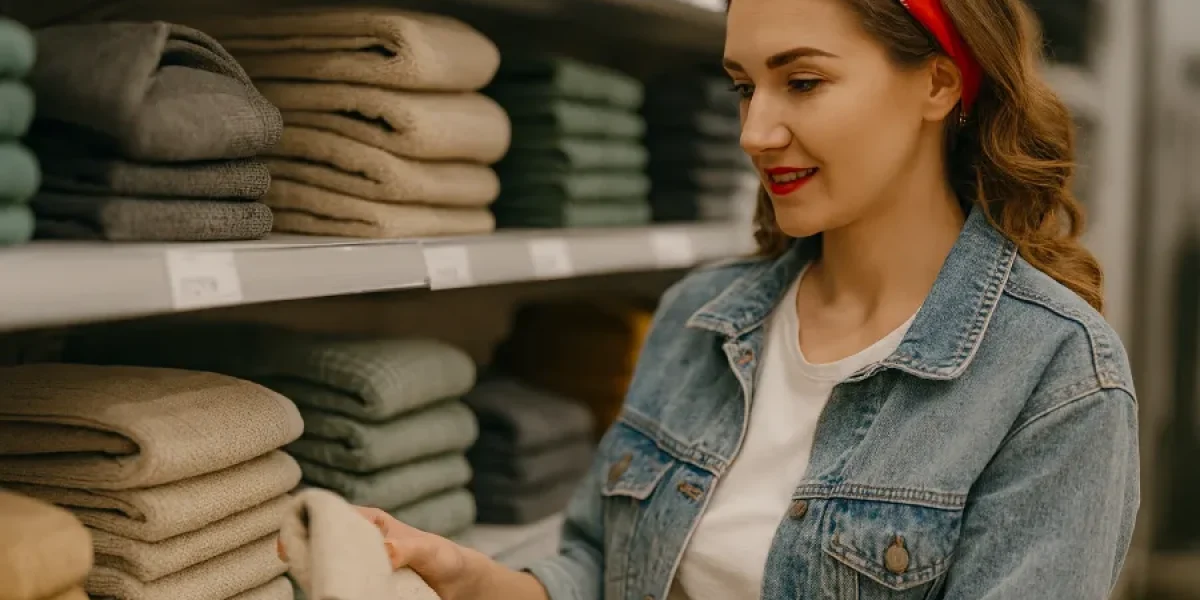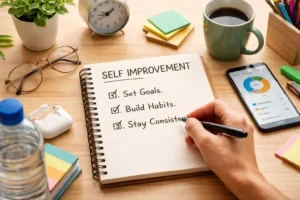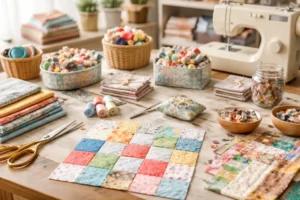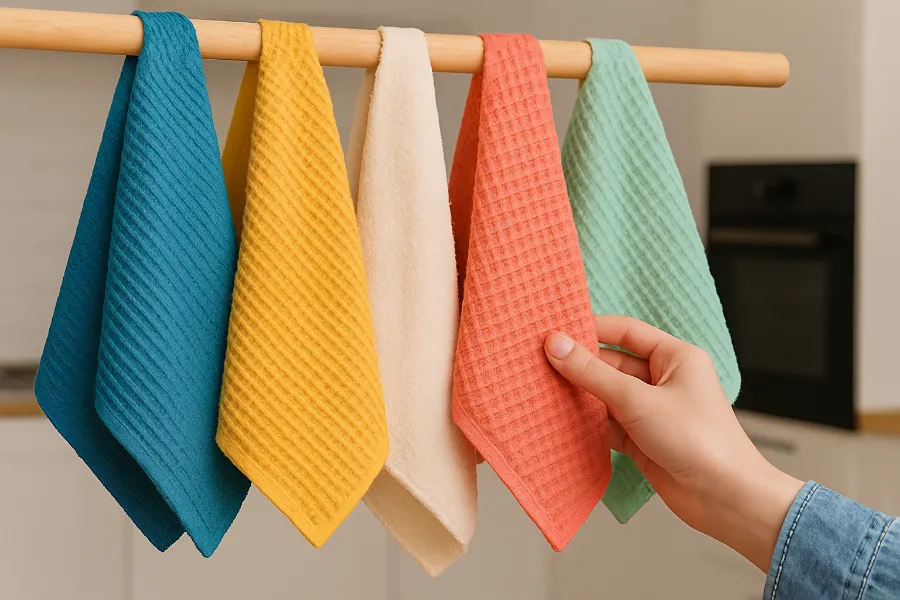
When I first switched to eco-friendly cloths, I thought they’d be like fancy washcloths — soft, gentle, perhaps better for skin. Turns out, they’re so much more versatile. These cloths live in my kitchen, laundry room, and sometimes even my bathroom (for cleaning corners).
What makes them special is their durability and the fact that with the right care, they don’t pick up that sour, musty odor many disposables or sponges do. So whenever someone mentions wash cloths in a sustainable or zero-waste context, these reusable cloths are what I think of.
But like all things reusable, they demand a little TLC — otherwise, they wear out or stink. That’s what I want to help you avoid.
Dish Cloths — Why They’re Essential to My Eco Routine
In my home, the dish cloths are the workhorses. They handle greasy pans, wiping counters, drying glassware — everything your sponges or paper towels try to do. The difference? I wash them and reuse them, so I produce less waste.
A few principles I follow for dish cloths:
- I rotate 5–7 cloths, so I always have clean ones while others are in the wash.
- I choose materials that dry fast (linen, bamboo, cellulose blends) so they don’t linger damp.
- I never let food particles sit — I always rinse and wring them right away.
With that, the dish cloths stay cleaner and fresher much longer.
Cleaning Cloths — My All-Purpose Heroes
Next up: cleaning cloths. These are the cloths I use for dusting, wiping spills on non-food surfaces, glass cleaning, etc.
Here’s what I love:
- Use one cloth for dusting surfaces, another for glass (linen is great there).
- I avoid bleach or harsh sprays — these cloths don’t need them if maintained well.
- Once a week or every few days, I give them a deeper clean (which I’ll explain below) so they don’t develop odor or discoloration.
They really do replace a lot of disposable wipes and paper towels around the house.
Kitchen Cloths — My Everyday Essential
If ever a cloth earns “everyday essential” status, it’s the kitchen cloths. They live on the edge of my sink, draped over the faucet, hung on appliance handles. They catch drips, wipe counters, and act as my “go-to rag” for spills.
Because they’re used so often, they’re the first to get dirty — so they must be cleaned often and properly. What I’ve learned over time:
- I never leave them lying crumpled in the sink.
- I hang them so air can circulate (helps reduce odor).
- I treat them more carefully than my other cloths, because they see the worst messes.
The better I care for kitchen cloths, the fewer times I feel the need to replace them.
Hot Wash — The Backbone of My Cleaning Routine
If I had to pick one method that changed everything, it’s this: hot wash. I wash my cloths in hot water (at least 140 °F / ~60 °C) whenever the fabric allows. That’s the temperature that helps kill bacteria, remove grease, and reset the cloth’s fiber structure.
Here’s how I do it:
- I collect all the used cloths into a mesh laundry bag.
- I run my washing machine or hand wash cycle on hot (if the fabric is safe for it).
- I use an enzyme-based or eco-friendly detergent to help break down food residue.
- I never use fabric softener — it coats fibers and traps smells.
- After washing, I dry them fully — either in a hot dryer (if safe) or hanging in the sun.
Doing a hot wash regularly is what keeps them from smelling even after heavy use.
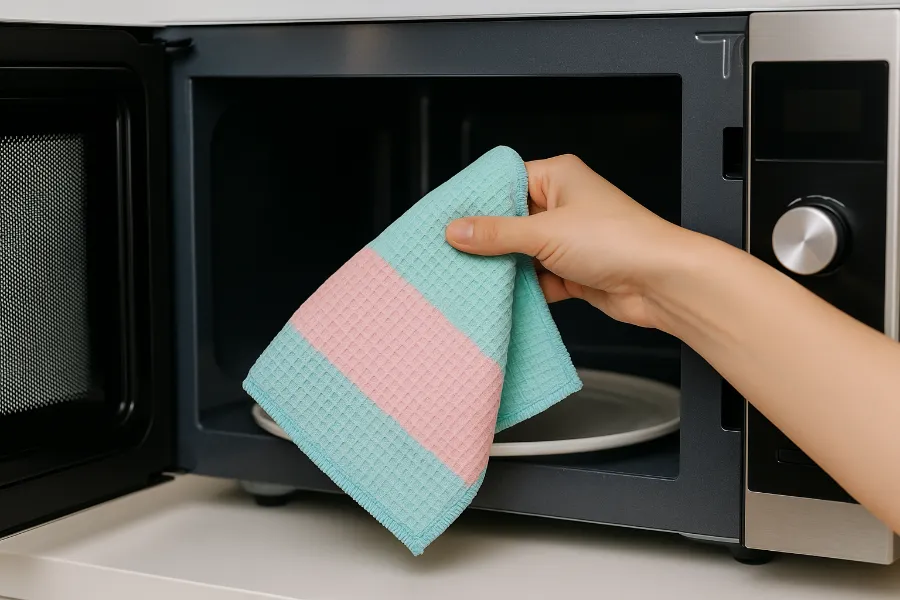
Microwave Clean — Quick Refresh in 90 Seconds
Sometimes a cloth hasn’t been heavily used but started to smell a little “off.” In those moments, I use the microwave clean trick. It’s fast, simple, and surprisingly effective.
Here’s my routine:
- Rinse the cloth so it’s damp (never dry — that’s a fire hazard).
- Place it flat on a microwave-safe plate.
- Microwave for 1–2 minutes (start with 1 minute and check).
- Let it cool before grabbing it.
This method helps kill lingering bacteria and gives the cloth a midweek refresh. I don’t rely solely on it — it’s an “in-between” trick before the next full wash.
Oxygen Cleaner — My Go-To Deep Clean Boost
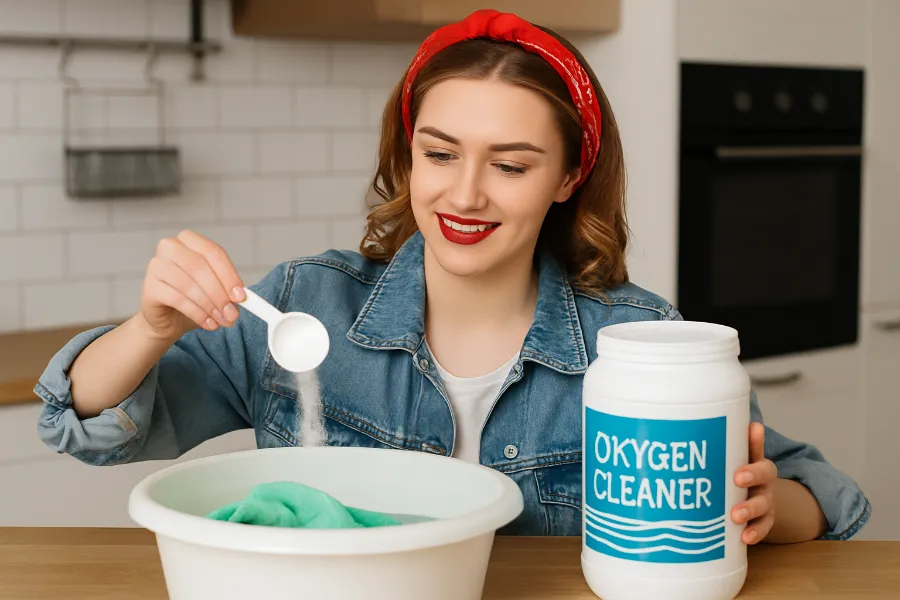
For those cloths that are stubborn — stained or smelling despite regular washing — I turn to oxygen cleaner. It’s like a deep-clean booster that’s safer for fabrics than bleach and more powerful than just detergent alone.
How I use it:
- I fill a basin or bucket with hot water and add oxygen cleaner (following package instructions).
- I soak the cloths for 20–30 minutes (sometimes up to an hour).
- After soaking, I wash them normally (hot wash).
The result is a cloth that looks and smells like new, minus harsh chemicals. It’s one of my favorite eco-friendly tricks.
My Step-by-Step Eco-Friendly Cloth Care Routine
Here’s how I keep all my cloths in tip-top shape (dish, kitchen, wash, etc.):
Daily Habits
- Rinse and wring immediately after use.
- Hang to air-dry, not crumpled in a pile.
- Rotate use so no single cloth gets overworked.
Every 1–2 Days
- Do a hot wash of used cloths.
- Use enzyme-based or eco detergent.
- Skip fabric softeners.
- Include a splash of white vinegar in the rinse if you want extra deodorizing.
Midweek Refresher
- Microwave clean lightly used cloths to kill bacteria before they smell.
Deep Clean (Weekly/Biweekly)
- Use an oxygen cleaner soak before washing.
- Boil (for materials that can handle it).
- Air-dry in sunlight, or use a hot dryer if the fabric allows.
Replacement Time
- If the cloth has persistent odor, holes, thinning, or lost absorbency — it’s time to replace it.
- In my experience, well-cared-for eco cloths last 3–6 months, sometimes longer.
Why This Matters (And Why I Started Doing It)
When I first switched to eco-friendly cloths, I underestimated how quickly they’d begin to smell if neglected. I tried a bunch of cloths, and most turned mushy or smelly within weeks. It felt defeating.
Over time, I experimented with care routines. The turning point came when I discovered hot wash + oxygen cleaner soaks + microwave refreshes could make cloths last months without odor. That’s when I became a true convert.
Also — sustainability isn’t just about buying eco cloths; it’s about extending their life so your environmental footprint is lower. Those methods above help me avoid sending cloths to landfill prematurely.
I also find joy in knowing I’m using fewer disposables, cutting waste, and building a cleaner, healthier home.
Tips I’ve Learned (So You Don’t Make My Mistakes)
Let me share a few lessons so you don’t repeat my early errors:
- Don’t let cloths sit damp. Wet cloths left in a pile = mildew.
- Avoid fabric softeners and scented dryer sheets. They leave coatings that trap odor.
- Test heat tolerance. Some eco cloths (especially blends) can’t take extreme heat.
- Use mesh bags for washing. Keep cloths from getting snagged or lost.
- Sunlight is your ally. UV rays help kill lingering bacteria and naturally brighten.
- Have backup cloths. Don’t depend on just 1–2 — you’ll burn them out fast.
Final Thoughts: Make Eco-Friendly Cloths Work for You
If I had to sum it up: eco-friendly cloths are only as good as the care you give them. With a combination of hot wash, microwave clean, and occasional use of oxygen cleaner, you can keep them fresh, potent, and odor-free for months.
I love my dish cloths, kitchen cloths, cleaning cloths, and wash cloths enough now to treat them well — and they reward me by doing the same for my home.
FAQs
Rinse them immediately after use, wring out excess water, and hang them to dry. A regular hot wash or microwave clean will also keep odors away.
Yes, most eco-friendly cloths can be machine washed. Use a hot wash cycle with an eco-friendly detergent for best results.
Ideally, wash dish cloths every 1–2 days, especially if you cook frequently. Rotate several cloths to always have a fresh one on hand.
The microwave clean method works best for quick sanitizing. Just make sure the cloth is damp before microwaving for 1–2 minutes.
Yes, oxygen cleaner is fabric-safe and effective at removing odors and stains. It’s a gentler alternative to bleach and works well in hot water soaks.
Bamboo, linen, and cellulose blends like Swedish cloths are top choices. They resist odors, dry quickly, and are long-lasting.
With proper care, eco-friendly cloths can last 3–6 months. Replace them if they lose absorbency, develop holes, or retain odors.

